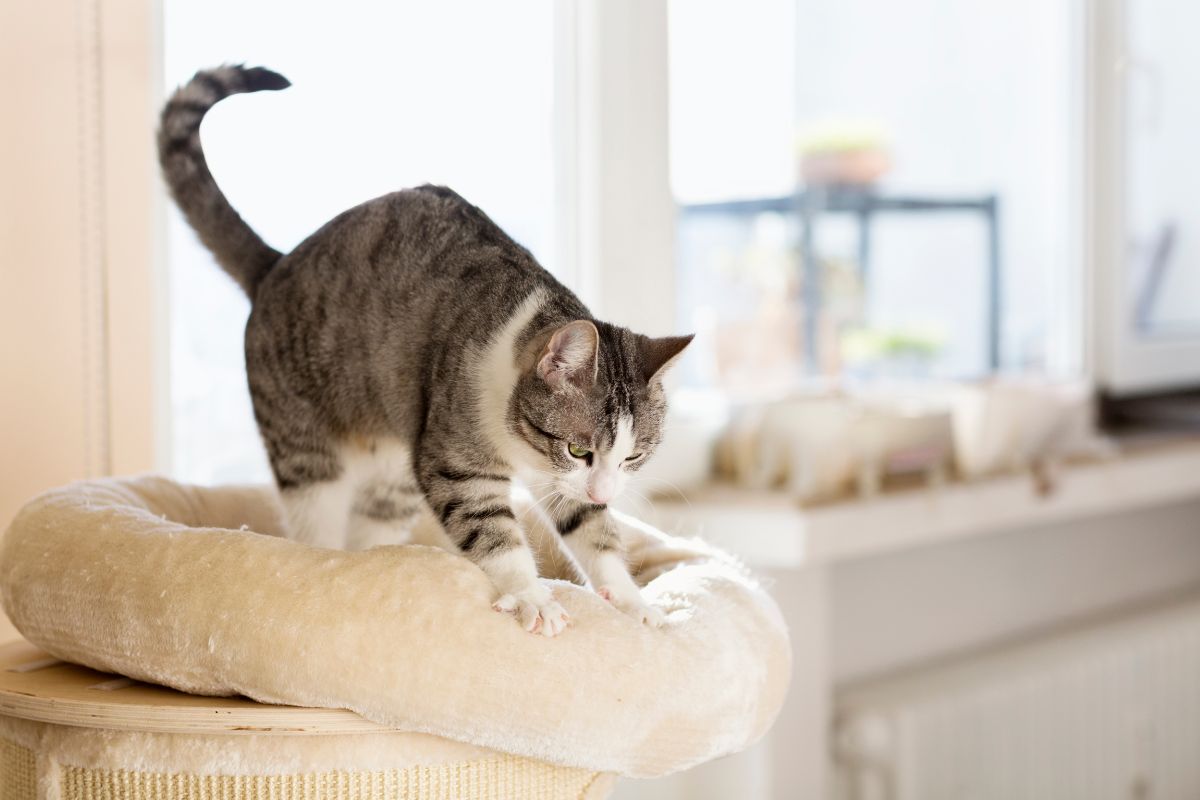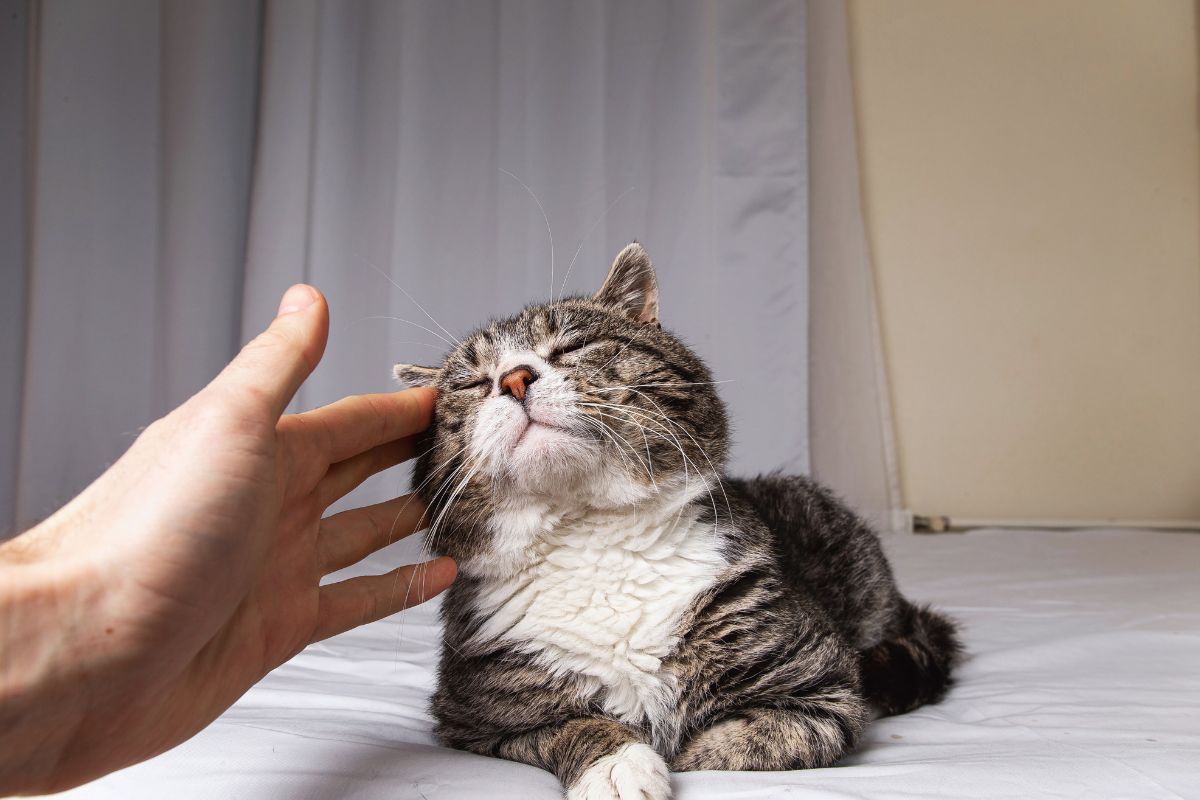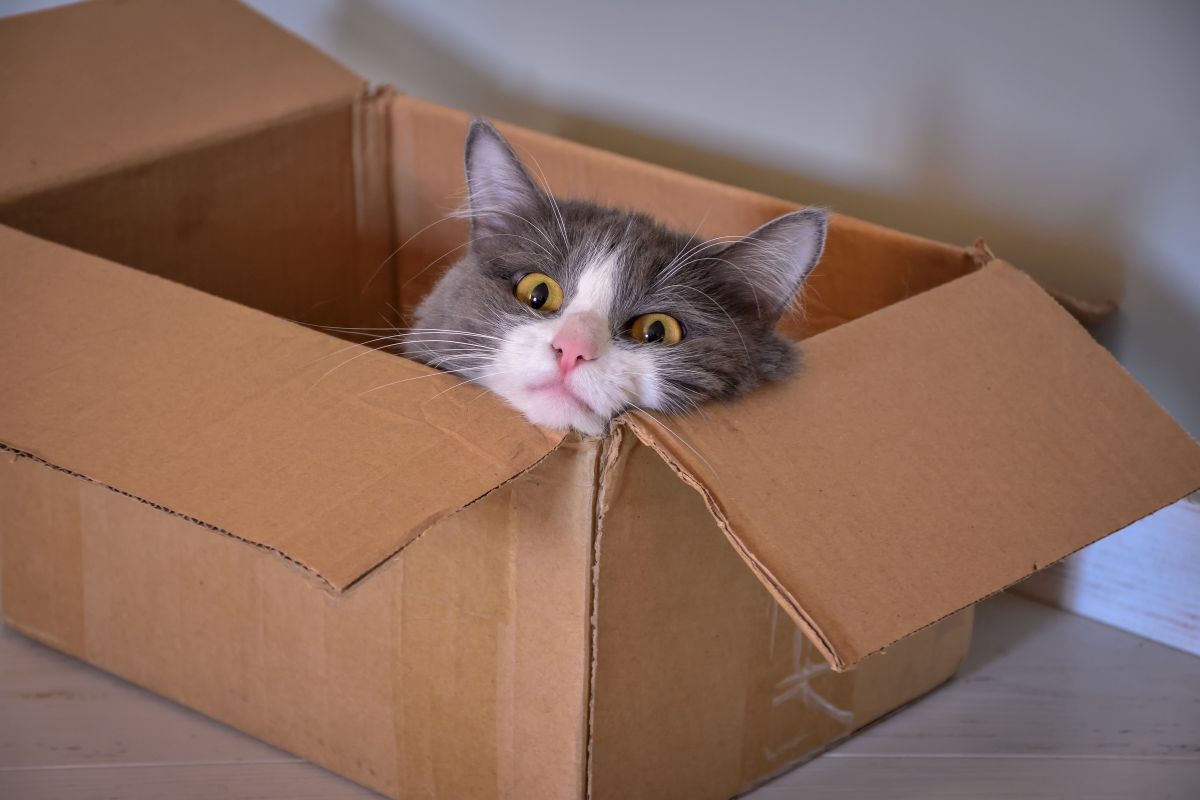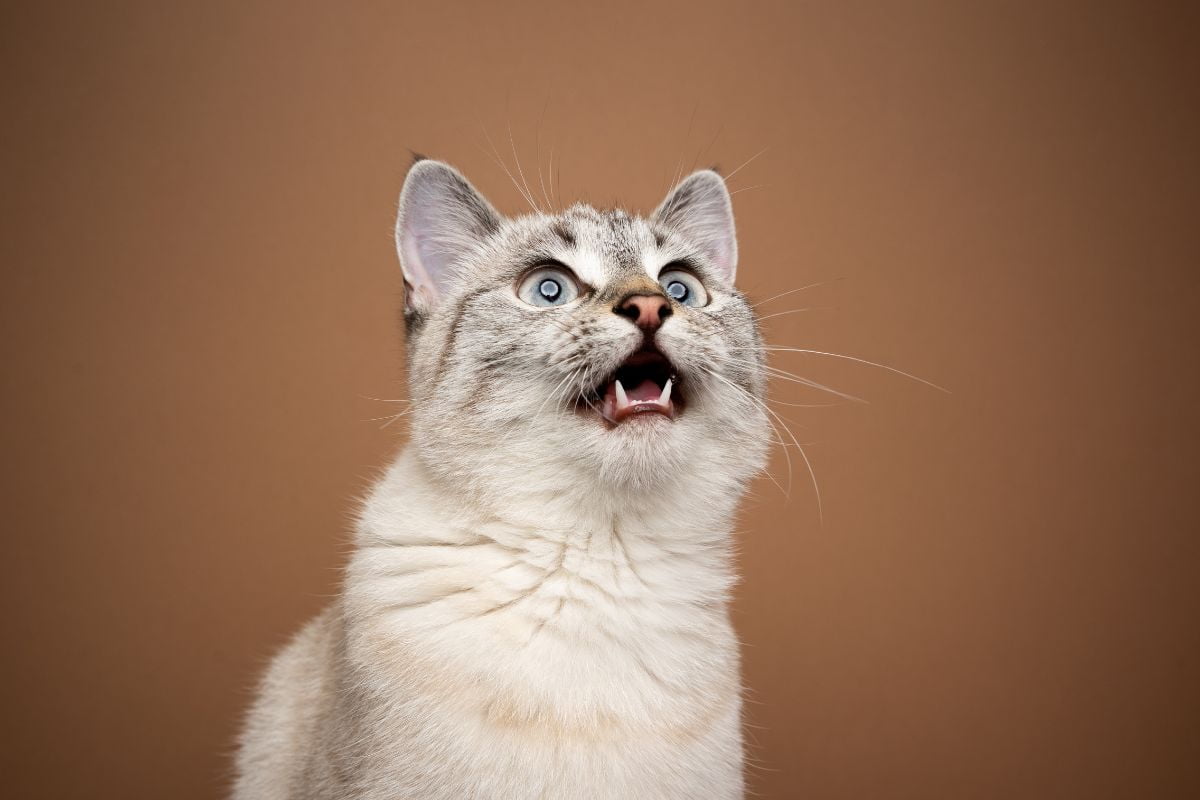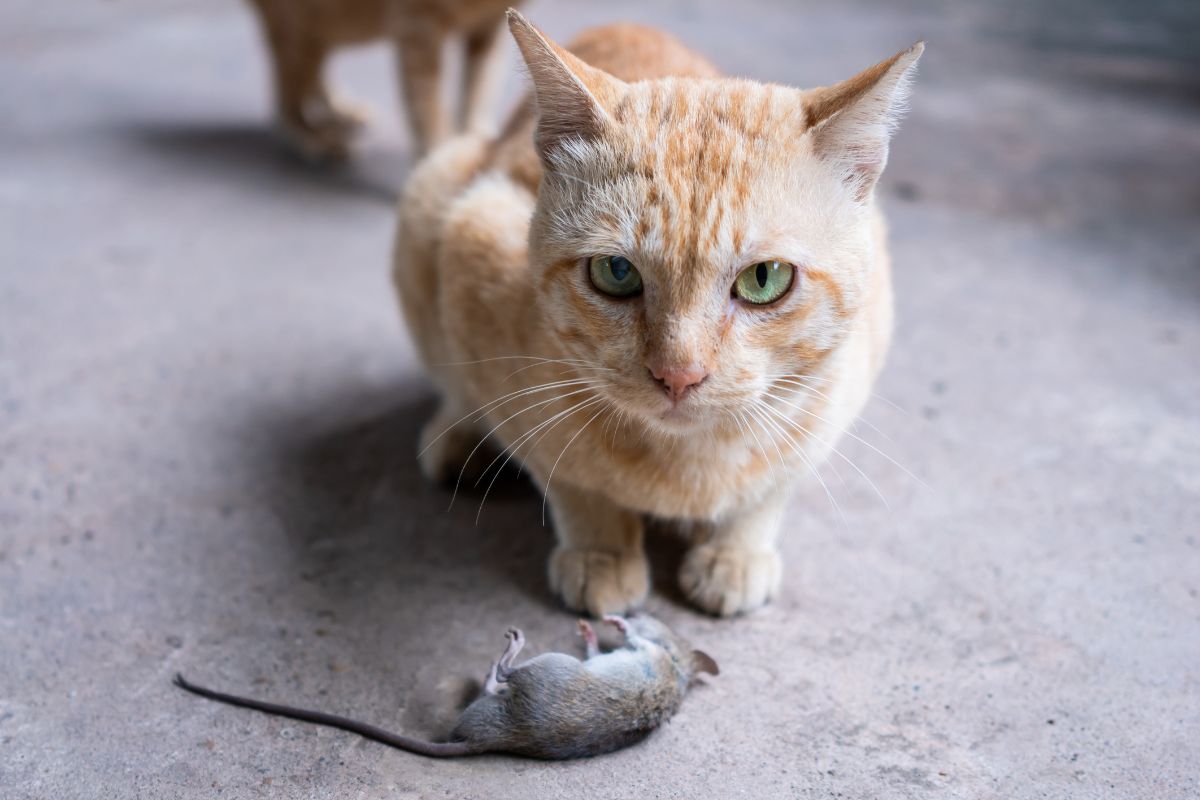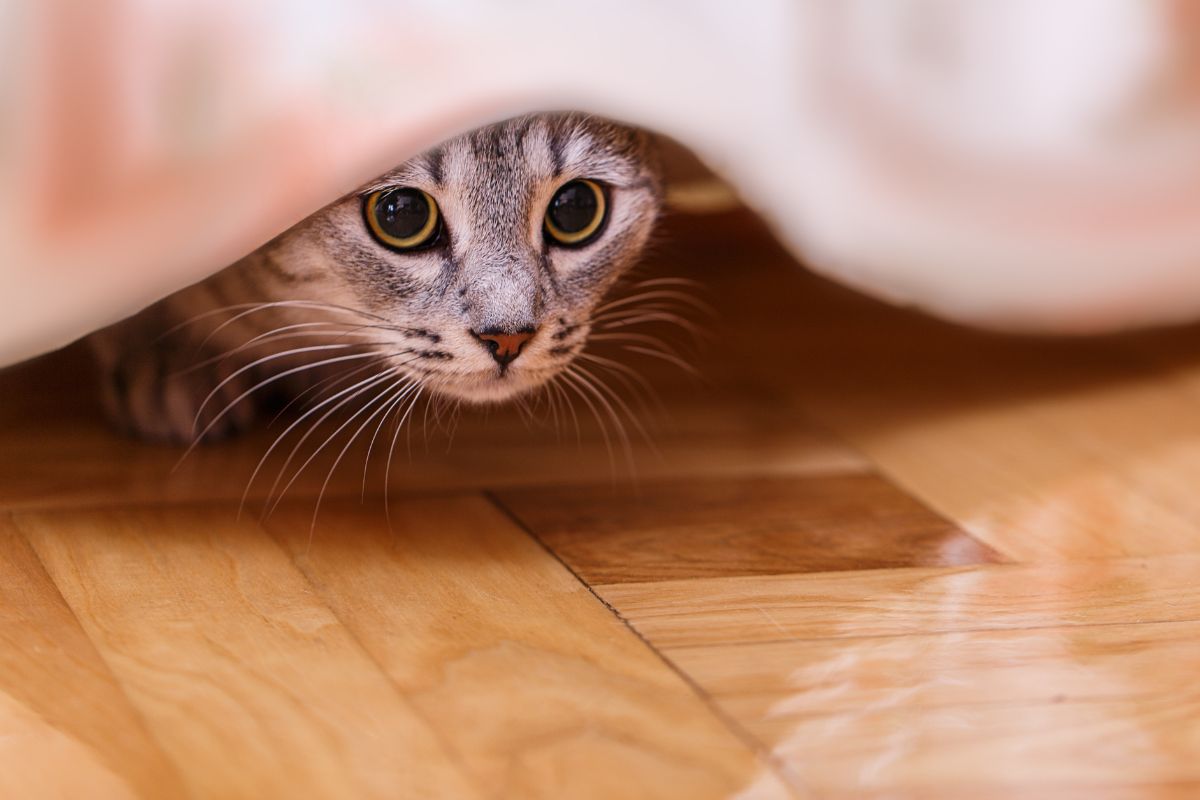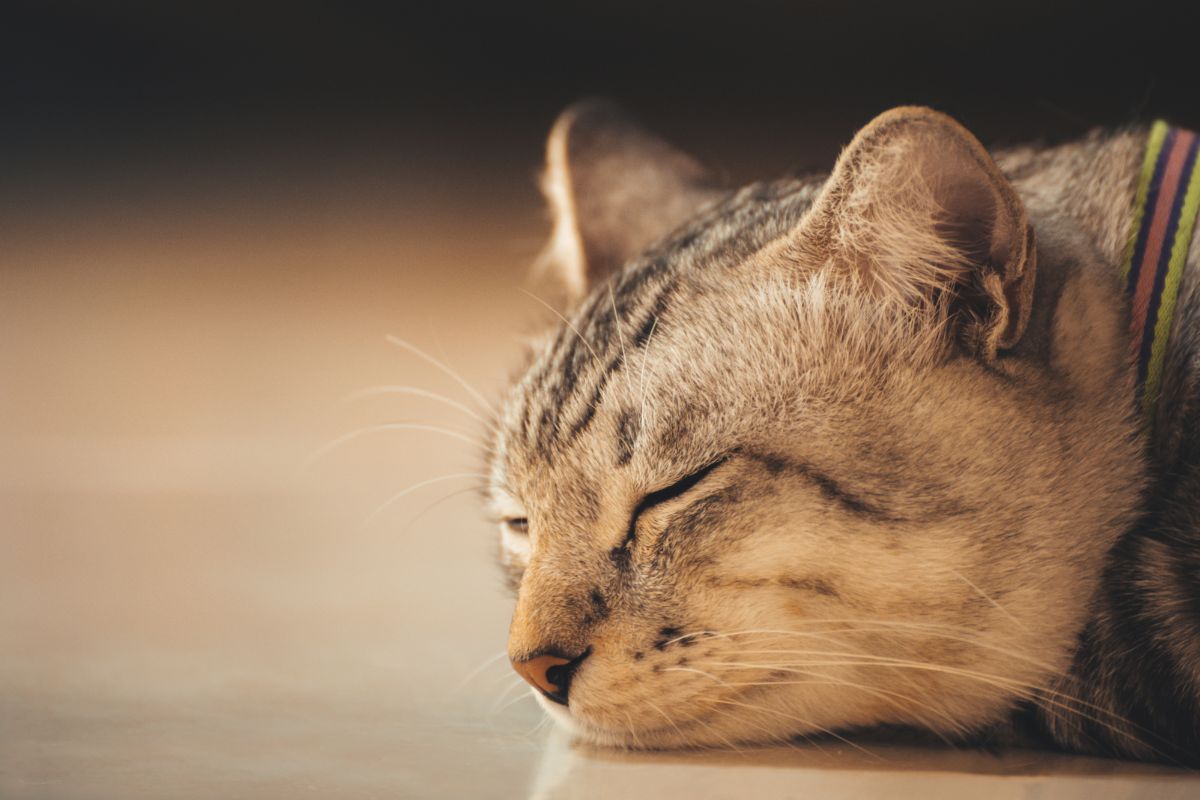Cats are intriguing creatures with a complex tapestry of behaviors that often leave us scratching our heads in wonder. They are enigmatic beings, capable of sudden bursts of energy in the middle of the night that could rival the liveliest of dance parties, yet equally content nestled inside an empty cardboard box. Feline behavior is a fascinating blend of the mysterious and the endearing, a puzzle that continually unfolds in our daily interactions with them.
In this article, We will delve deep into the curious behaviors that make our cats uniquely charming, unveiling the secrets hidden behind their actions.
1. Kneading
Explanation:
Kneading is a charming and seemingly instinctual behavior exhibited by cats. This endearing action involves your cat rhythmically pushing their paws in and out against a soft surface, such as your lap, a cosy blanket, or even your chest.
Why Cats Do It:
To understand why cats knead, we need to journey back to their earliest days as tiny, helpless kittens. Nursing kittens instinctively knead their mother’s belly while suckling at her teats. This kneading motion stimulates milk flow, ensuring they get the nourishment they need to grow and thrive.
However, what’s truly remarkable is that many cats carry this behavior into adulthood. When your adult cat kneads, they are harkening back to the comforting memories of kitten hood. It’s a deeply ingrained habit that they associate with a sense of safety, contentment, and relaxation.
2. Purring
Explanation:
Purring is one of the most iconic and recognizable behaviors in cats. It’s a melodious, rhythmic sound produced by the rapid contraction and relaxation of a cat’s laryngeal (voice box) muscles. Cats can purr when they’re content, but interestingly, they may also purr when they’re injured, stressed, or unwell.
Why Cats Do It:
Self-Soothing Mechanism: One of the primary reasons cats purr is as a form of self-soothing. When a cat purrs, it releases endorphins, which are natural “feel-good” chemicals in the brain. This process provides the cat with a sense of comfort and security, helping them cope with various situations, including stress and pain.
Communication: Cats are adept at non-verbal communication, and purring serves as a powerful means of conveying their needs and emotions. In some cases, a cat might purr to signal to their human caregiver that they require attention or assistance. It’s their way of saying, “I need you.”
Self-Healing: Astonishingly, purring has been linked to the cat’s ability to self-heal. The low-frequency vibrations produced during purring are thought to have a therapeutic effect on the cat’s body. This may explain why cats often purr when they are injured or unwell, as it could aid in the healing process.
3. Nighttime Zoomies
Explanation:
Imagine this: you’re peacefully asleep in the middle of the night when suddenly, your normally composed and drowsy cat goes into a frenzy. They dart through the house with lightning speed, leaping onto furniture and racing around like a miniature tornado. This erratic behavior can be startling, but it’s a common occurrence among our feline friends.
Why Cats Do It:
Crepuscular Nature: To understand this phenomenon, we need to consider a fundamental aspect of feline biology. Cats are crepuscular animals, which means they are naturally most active during the dawn and dusk hours. In the wild, these times offer optimal conditions for hunting, as prey animals are also active during these transitional periods.
Burning Excess Energy: Your domesticated cat may have a cozy bed and a bowl of kibble readily available, but their innate instincts remain deeply ingrained. During the daytime, they might lounge and nap, but as night falls, their inner predator awakens. Nighttime zoomies are simply your cat’s way of burning off excess energy that has accumulated throughout the day.
Hunting Simulation: These midnight sprints and acrobatics are akin to a hunting simulation for your cat. Pouncing on shadows, chasing imaginary prey, and darting around the house provide mental and physical stimulation. It allows them to practice their hunting skills, even if the “prey” is a toy mouse or a beam of moonlight.
Playfulness and Exercise: Nighttime zoomies also serve as a form of play and exercise. Cats require mental and physical stimulation to stay happy and healthy, and these bursts of activity fulfil that need. While it might disrupt your sleep, it’s a sign that your cat is maintaining their overall well-being.
4. Chattering at Birds
Explanation:
Have you ever observed your cat chattering at birds outside the window? It’s a fascinating behavior where your feline friend emits a series of rapid, chattering vocalizations. It’s almost as if they’re trying to mimic the sounds of the birds they’re watching.
Why Cats Do It:
Instinctual Hunting Response: Chattering at birds is believed to be an instinctual hunting response. Cats are natural predators, and when they spot birds, a deep-seated desire to catch them awakens. The chattering sound may be an expression of their intense anticipation and excitement at seeing potential prey.
Frustration or Anticipation: Some experts suggest that chattering may also be a way for cats to express their frustration. When they see birds they can’t physically reach, they may become agitated. Chattering could be their way of releasing that pent-up energy or expressing their anticipation of the hunt.
5. Bringing You “Gifts”
Explanation:
Your cat’s habit of proudly presenting you with “gifts” like dead mice or birds can be both perplexing and unsettling. It’s a behavior that may leave you scratching your head, wondering why your cat insists on delivering such unconventional tokens of affection.
Why Cats Do It:
Natural Hunters: Cats are exceptional hunters by nature. In the wild, they hunt to secure food for themselves and their family members, which is a crucial survival skill. When your cat brings you a “gift,” it’s a reflection of their hunting instincts.
Display of Affection: While it might not be your preferred form of affection, consider it your cat’s way of showing love. In their eyes, you are part of their family, and they are sharing their hard-earned “catch” with you. It’s a bonding gesture and a sign of trust.
Teaching Behavior: In some cases, especially with kittens, mother cats bring back prey to teach their young how to hunt. Your cat may be trying to impart these skills to you or simply view you as their surrogate family that needs to be fed.
6. Scratching Everything
Explanation:
It’s a scenario many cat owners are all too familiar with – the sight of their feline friend enthusiastically scratching furniture, carpets, and pretty much anything they can sink their claws into. This behavior can be perplexing and even frustrating for pet parents.
Why Cats Do It:
Claw Maintenance: Scratching serves as a vital component of a cat’s claw maintenance routine. Cats’ claws continuously grow, and scratching helps them shed the outer layers of their claws. This process keeps their claws sharp and healthy.
Territory Marking: Cats have scent glands in their paw pads, and when they scratch, they leave behind both a visual mark and a scent marker. It’s a way for them to stake their claim on a particular area, marking it as their territory. This is especially important for outdoor cats or multi-cat households.
Muscle Stretching: Scratching isn’t just about claw care and marking territory; it also serves as a form of exercise and muscle stretching. When a cat stretches upward while scratching, they engage their back and shoulder muscles. It’s an essential part of maintaining their overall physical health.
7. Hiding in Small Spaces
Explanation:
Cats have a peculiar fondness for cramming themselves into tiny spaces like boxes, drawers, and laundry baskets. Even when larger, more comfortable spots are available, they often choose these cozy, confined areas.
Why Cats Do It:
Sense of Security: Small, enclosed spaces offer cats a sense of security. In the wild, cats seek out hidden nooks and crannies as safe havens from potential threats. These spaces provide them with a sense of protection and control over their surroundings.
Temperature Regulation: Cats are naturally inclined to seek warmth, and small spaces can trap heat, creating a cozy and comfortable environment for them. This behavior is especially prevalent in cooler climates or during colder seasons.
Stress Reduction: When cats feel stressed or overwhelmed, they often retreat to small spaces for solace. It’s their way of coping with anxiety or changes in their environment.
8. Head-Butting You
Explanation:
You may have experienced the delightful yet sometimes pushy behavior of your cat nuzzling and head-butting you affectionately. They press their furry little heads against you, and it’s a display of affection that can be both endearing and surprising.
Why Cats Do It:
Display of Love and Trust: Cats have scent glands on their cheeks, and when they head-butt you, they are not only being affectionate but also marking you as part of their territory. In their feline world, this is a powerful way of saying, “You are mine, and I am yours.” It’s a display of the strong bond you share.
Communication and Comfort: Head-butting is also a form of non-verbal communication. Your cat may be seeking attention, seeking to be petted, or simply expressing their happiness and contentment in your presence. It’s their way of saying, “I love you, and I want to be close to you.”
9. Sleeping on Your Face
Explanation:
Your cat has an uncanny knack for choosing the most inconvenient spot to take a nap—right on your face! While it may not always be the most comfortable arrangement for you, it’s a behavior that many cat owners can relate to.
Why Cats Do It:
Seeking Warmth and Security: Cats are naturally drawn to warmth and security. Your face provides both. The warmth of your breath and body heat make your face an appealing spot for your cat to snuggle. It’s like a cosy, personal heating pad for them.
Comfort and Bonding: When your cat chooses to sleep on your face, it’s not just about warmth; it’s also a way for them to feel close and bonded to you. Cats seek physical contact with their loved ones, and sleeping on your face allows them to be nearby, strengthening your emotional connection.
Understanding these quirky behaviors can deepen your connection with your feline friend. Remember that every cat is unique, so while these explanations offer insights into common behaviors, your cat may have its delightful idiosyncrasies.
In conclusion, cats are endlessly fascinating creatures with behaviors that often defy explanation. From kneading and purring to nighttime zoomies and peculiar gifts, these actions make our feline friends even more lovable. Embrace the weirdness, and cherish the moments you share with your cat, no matter how peculiar their behavior may seem. After all, that’s what makes being a pet parent so rewarding


